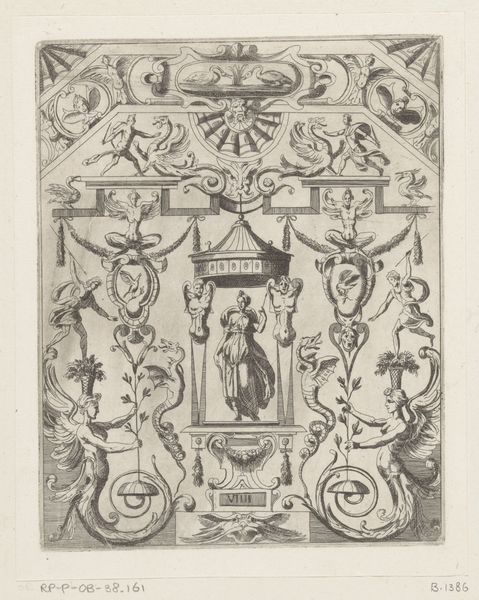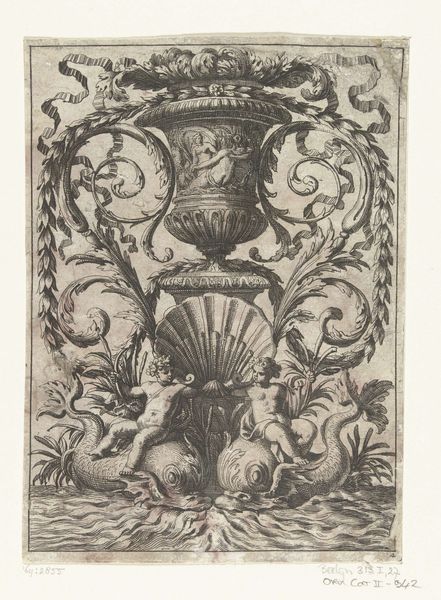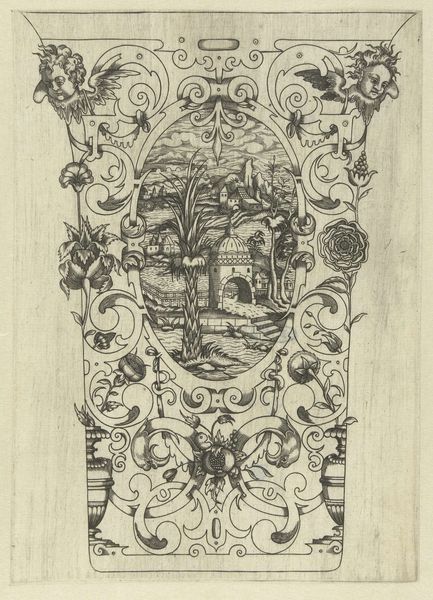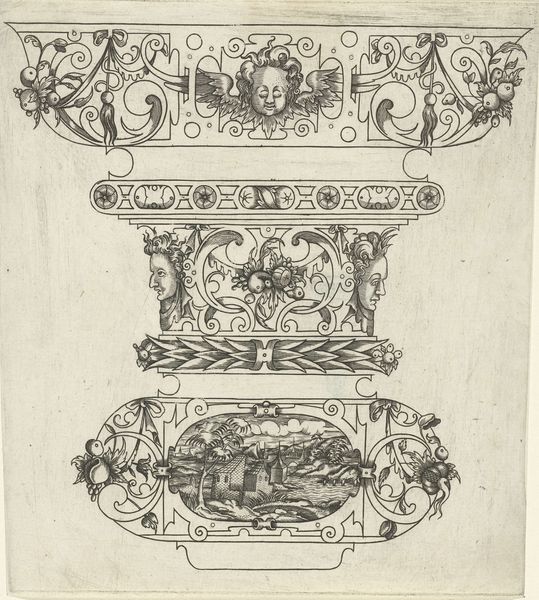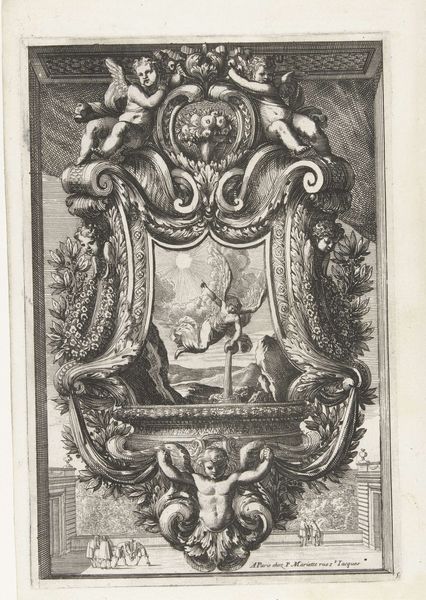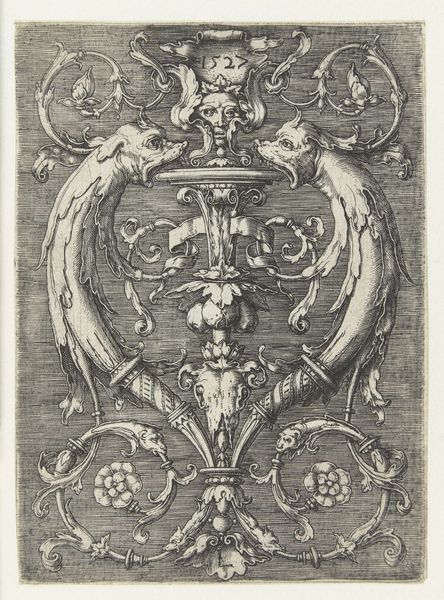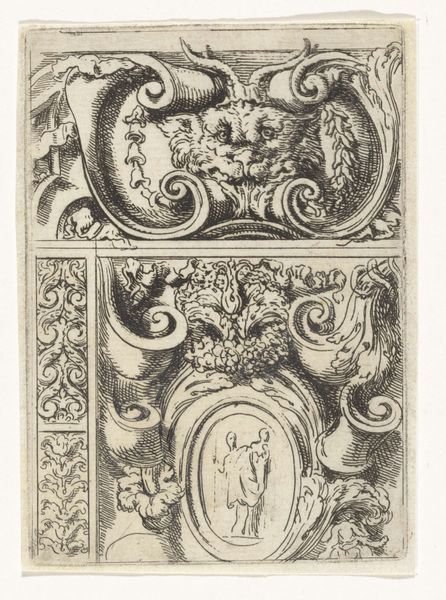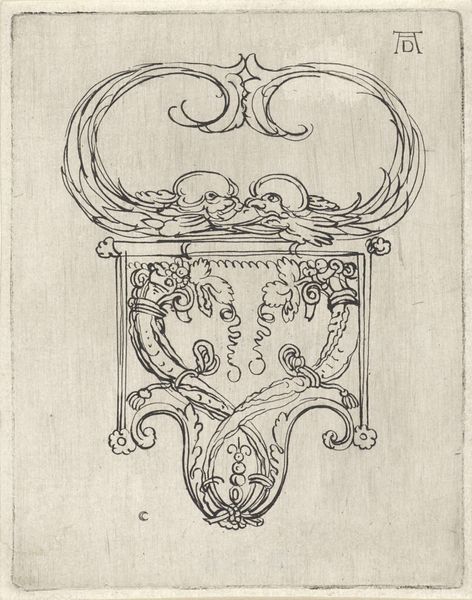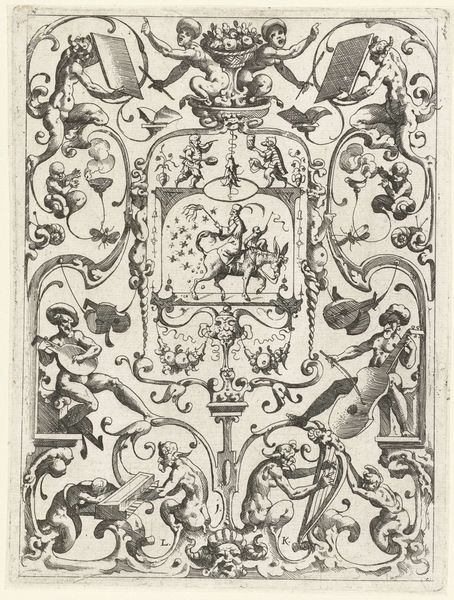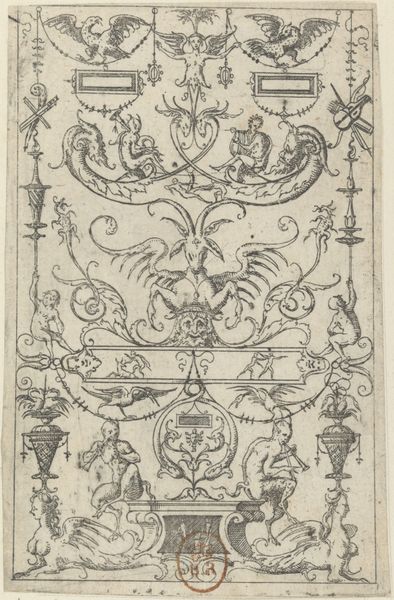
Bierkruik met een landschap in een ovaal, omgeven door krulwerk c. 1500 - 1598
0:00
0:00
print, engraving
# print
#
old engraving style
#
landscape
#
11_renaissance
#
engraving
Dimensions: height 151 mm, width 123 mm, width 136 mm
Copyright: Rijks Museum: Open Domain
Editor: This is “Bierkruik met een landschap in een ovaal, omgeven door krulwerk,” or Beer Jug with a Landscape in an Oval, Surrounded by Ornamentation, an engraving from sometime between 1500 and 1598, from an anonymous artist. I'm struck by how intricate the ornamentation is compared to the almost simple landscape contained within the oval. How do you see this piece? Curator: For me, this print speaks volumes about the materials and the means of production. Engraving, a technique rooted in manual labor and the careful manipulation of metal, transformed reproducible imagery into accessible art for the burgeoning middle class. The very existence of this print challenges the elitist notions of “high art.” Editor: That's interesting, the "accessible art" aspect. I was focused on the aesthetic difference between the frame and the interior landscape. Curator: But consider the socio-economic implications! The creation of this print was reliant on specialized labor, from the artist themselves to the people who provided materials to printmakers and print-sellers. How does the mass production capability of engraving intersect with traditional notions of the singular art object? Editor: So you're suggesting the "art" here isn't necessarily the image itself, but the social and economic network that enabled its creation and distribution? Curator: Precisely. This isn’t merely a beer jug decoration, it’s evidence of evolving economic relationships, the commodification of imagery, and the breakdown of hierarchies in art production. Look closely – you’ll see traces of the tools, the hand, and the social forces at play in every line. What labor do you imagine would have been involved in creating this work? Editor: That's given me a lot to think about regarding art's role in society and economy at that time. It’s more than just an image; it’s a historical object loaded with socio-economic data. Curator: Absolutely. Focusing on the materiality and the context really enriches our understanding.
Comments
No comments
Be the first to comment and join the conversation on the ultimate creative platform.

